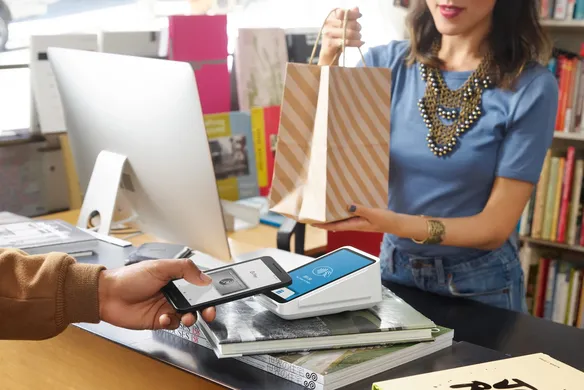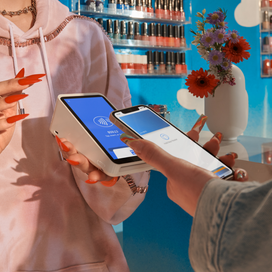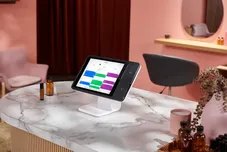Table of contents
Australian consumers have been steadily transitioning to electronic payment methods. During the 2019/20 financial year, the average Australian made around 560 electronic transactions, compared with 250 a decade earlier. Over the same period, the number of cash transactions per person declined from 320 to about 170.
The COVID-19 pandemic has dramatically accelerated the shift to cashless payments and Australia might become a cashless society within a few years. Consumers and brick-and-mortar businesses have sought to reduce their use of cash due to health concerns about handling banknotes and coins, and people are shopping online more than ever before.
With retailers encouraging contactless payment and consumers changing their payment behaviour to avoid cash and contact with payment terminals, the payments landscape is evolving rapidly.
Benefits of accepting different payment methods
Payment methods have come a long way in evolving to become better in supporting both consumer and business needs. By accepting various payment methods, it will open up opportunities for your business to potentially:
- Reach more customers globally
- Increase conversion
- Minimise chances of fraud
- Optimise transaction costs
Traditional payment methods
Regardless of which payment type your business decides to choose, it’s good to be across the most common types of payment that have been widely accepted by customers and businesses.
1. Cash
This is one of the most common types of payment methods where it enables your business to easily accept payments with no extra fees for each transaction. However, it could come with extra work on securing the cash on premises and checking the money at the end of the day.
2. Debit, credit cards
This method gives your customers the convenience of making larger transactions and checking out faster. Besides, your business won’t have to worry about keeping cash on premises. However, you might have to pay the transaction fees and wait a couple of days to receive the money into your bank account.
Payment trends and methods for your business
So, what are the payment trends and online payment methods that your business should consider for 2021 and beyond?
1. Mobile payments
Mobile payments have exploded in response to the pandemic, with the examples of mobile payments are mobile wallets, QR code payments and money transfers made using a mobile device. Mobile payment technology allows you to pay digitally rather than using cash, cheques or physical credit cards.
Accepting mobile payment gives your business’s customers the flexibility to pay using their preferred payment method, lets you serve them faster, and will often save you money on credit card fees.
What is a mobile wallet?
A mobile wallet is essentially a digital wallet on your phone. It lets you securely add and store the details associated with your debit and credit cards, so you can use your phone rather than a physical card to make purchases.
Australia’s most popular mobile wallets are Apple Pay, Google Pay and Samsung Pay.
What are QR code payments?
QR (quick response) code payments are contactless payments made by scanning a QR code. To make a QR code payment, you simply scan a QR code that’s displayed by the merchant using your phone to pay for your purchase.
QR codes are increasingly used in the hospitality industry as a way for customers to view a menu on their mobile device, order and pay for their food and drinks. Used in both eat-in and takeaway settings, QR code ordering and payment supports contactless table-side and curbside transactions, allowing customers to place an order and pay without going to the counter.
Square’s self-serve ordering solution is a QR code generator for payments which lets you create a contactless dine-in and takeaway experience by allowing customers to browse your menu, place an order and pay via their mobile device.
2. Payment gateways
What is a payment gateway?
A payment gateway links your website with a secure payment network. In simple terms, it’s software that encrypts and transmits transaction data when a customer makes a purchase. If you have an online store, an online payment gateway lets you accept customer payments via your website using a simple online payment form.
There are many online payment gateways and platforms out there. When choosing the best option for your business and ecommerce store, you should consider:
- Compatibility – Will your chosen payment gateway work with your ecommerce platform?
- Security – Protecting your customers’ payment information is crucial. Look for a payment gateway that offers comprehensive end-to-end encryption and is PCI compliant.
- Fees and contracts – Before committing to a payment gateway, ensure you understand the fee structure and whether you’re locked into a long-term contract. If you’re new to selling online, you won’t know how many transactions you’ll be processing a month or year from now – consider a flexible payment gateway like Square Online Checkout that has no contracts, monthly fees or start-up costs. You’ll pay just 2.2% per transaction.
3. Online invoices
If you’re a business who gets paid via invoice, you should absolutely be using electronic invoices in 2021. Online invoices are less likely to be lost or misplaced and are generally paid faster than their paper-based alternatives.
Quality invoicing software allows you to create and send online invoices instantly from your desktop or mobile device, track payment status and accept payments in real time. Customers can pay online invoices in one click either in person or using their mobile device. Invoicing software is built to save you time, work smarter and faster.
Square Invoices – online invoice generator software – lets your clients pay 24/7 online, and you’ll have access to these funds as soon as the next day. It’s free and simple to set up, with no monthly fees and no contracts.
4. Over the phone payments
Phone orders, where a customer provides credit card information over the phone to make a transaction, are classified as a card-not-present (CNP) transaction. With this type of transaction, neither the customer or their physical card are present at the point of sale, meaning the merchant must enter the cardholder’s data into their payment gateway themselves.
When processing an over the phone payment, you’ll generally need to capture:
- The card number
- The card expiry date
- The card security code (also known as the card verification value or CVV)
Square’s Virtual Terminal turns your computer into a payment terminal, allowing you to accept credit and debit card payments over the phone, anytime, anywhere. With Square Virtual Terminal, you don’t need any special hardware to input card details and finalise a sale with a few clicks. There are no hidden fees or long-term contracts; pay just 2.2% per transaction.
At Square, we create solutions that respond to emerging online payment trends and methods and enable our customers to simplify the way they manage payments. Millions of businesses use our secure, flexible and reliable payment gateway, saving time, money and hassle, regardless of how they make sales.
Learn more, create a free account in minutes and start selling today with Square.
![]()











